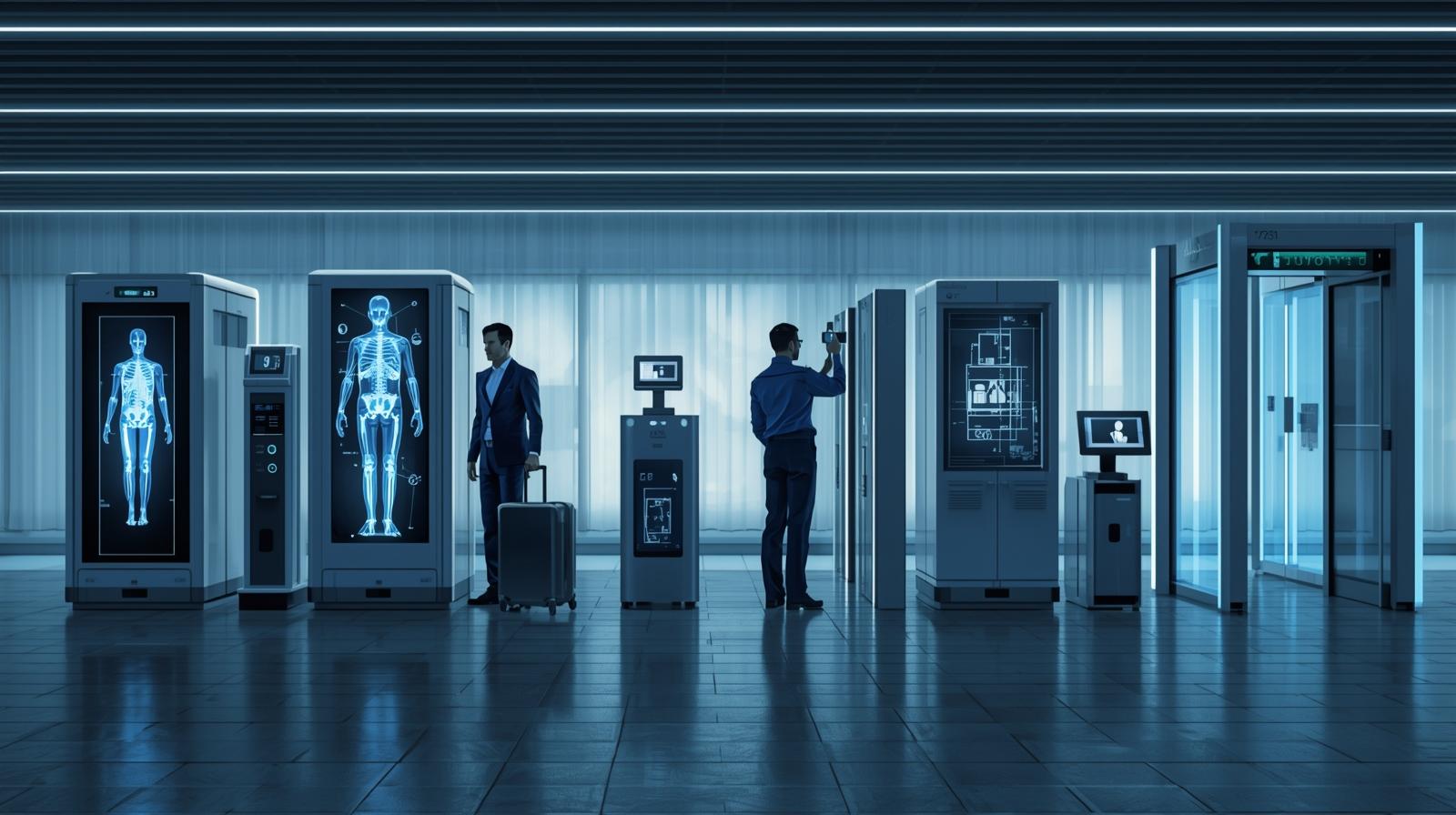The security screening market has witnessed a remarkable transformation in recent years, driven by increasing global concerns over safety, terrorism, and crime. As threats become more sophisticated, traditional security screening methods are no longer sufficient. Artificial Intelligence (AI) and Machine Learning (ML) are emerging as powerful technologies that are reshaping the security screening landscape, offering enhanced capabilities in threat detection, efficiency, and accuracy.
The Growing Need for Advanced Security Screening Solutions
With the rapid increase in global travel, mass gatherings, and critical infrastructure development, ensuring robust security protocols has become paramount. Airports, transportation hubs, public venues, and border control points require advanced screening systems that can process high volumes of people and luggage without compromising safety.
Traditional security screening technologies, such as X-ray scanners and metal detectors, provide baseline security but often rely heavily on human operators to identify threats. This reliance can lead to errors, slower throughput, and challenges in detecting emerging or concealed threats. The integration of AI and ML offers a promising solution to these limitations.
How AI and Machine Learning Enhance Threat Detection
AI and Machine Learning algorithms can analyze vast amounts of data generated during security screening processes in real-time. By learning from historical data and continuously improving their predictive accuracy, these systems can identify patterns and anomalies that might be missed by human operators.
For example, AI-powered image recognition can more accurately detect prohibited items in luggage scans, differentiating between harmless objects and potential threats. Machine Learning models can adapt to new types of threats, evolving with changing tactics used by malicious actors.
Furthermore, AI systems enable predictive analytics to anticipate security risks based on behavioral data, improving proactive threat management. This dynamic approach enhances the overall security posture while reducing false alarms and unnecessary manual inspections.
Download PDF Brochure @ https://www.marketsandmarkets.com/pdfdownloadNew.asp?id=264685413

Impact on Operational Efficiency and User Experience
Beyond improving threat detection, AI and ML significantly boost operational efficiency within security screening environments. Automated systems can expedite screening processes, reducing wait times and congestion at checkpoints. By minimizing human intervention, AI-powered screening reduces fatigue and cognitive overload for security personnel, allowing them to focus on critical decision-making.
Additionally, AI-driven analytics provide valuable insights for resource allocation, maintenance scheduling, and continuous improvement of security protocols. These efficiencies translate to better passenger experiences and cost savings for security operators and facility managers.
Challenges and Considerations in Adoption
While AI and Machine Learning offer substantial benefits, their integration into security screening also presents challenges. Ensuring the accuracy and fairness of AI algorithms is critical to avoid biases or errors that could affect passenger privacy and rights. Data security and ethical considerations must be carefully managed to maintain trust.
Moreover, implementing these advanced systems requires significant investments in infrastructure, training, and ongoing system updates. Regulatory compliance and standards alignment are also essential to facilitate widespread adoption.
Future Outlook for the Security Screening Market
The future of the security screening market is closely tied to advancements in AI and Machine Learning. As these technologies mature, their applications will expand beyond traditional screening to include facial recognition, biometric verification, and behavior analysis. Integration with Internet of Things (IoT) devices and cloud-based platforms will enable more interconnected and intelligent security ecosystems.
Collaborations between technology providers, governments, and security agencies will drive innovation and establish new benchmarks for threat detection and public safety.
AI and Machine Learning are revolutionizing the security screening market by enhancing threat detection capabilities, improving operational efficiency, and delivering better user experiences. Despite challenges in implementation and ethical concerns, the potential benefits make AI-driven security screening an essential component of modern safety strategies. As the market evolves, continued investment and innovation will be crucial to addressing emerging threats and safeguarding people and infrastructure worldwide.
FAQ: Security Screening Market and AI/ML Impact
Q1: How is AI improving security screening systems?
AI enhances security screening by enabling faster and more accurate threat detection. Through machine learning algorithms, AI can analyze images, recognize patterns, and identify prohibited items or suspicious behaviors with greater precision than traditional manual methods.
Q2: What are the key benefits of integrating AI and ML into security screening?
Key benefits include reduced false alarms, increased throughput, improved accuracy in detecting concealed threats, enhanced operational efficiency, and better resource allocation. AI-powered systems can also adapt to emerging threats dynamically.
Q3: In which industries is AI-driven security screening most widely adopted?
AI-driven security screening is most prominent in airports, transportation hubs, border control, critical infrastructure facilities, and large public venues. It’s also expanding into sectors like logistics, government buildings, and event security.
Q4: What challenges do organizations face when adopting AI in security screening?
Challenges include the high cost of implementation, data privacy concerns, algorithm biases, need for skilled personnel to manage AI systems, and ensuring compliance with regulatory standards.
Q5: How does AI impact passenger or user experience during security screening?
AI can streamline screening processes, reducing wait times and minimizing intrusive checks. Automated threat detection lowers the risk of unnecessary manual inspections, improving overall user comfort and satisfaction.
